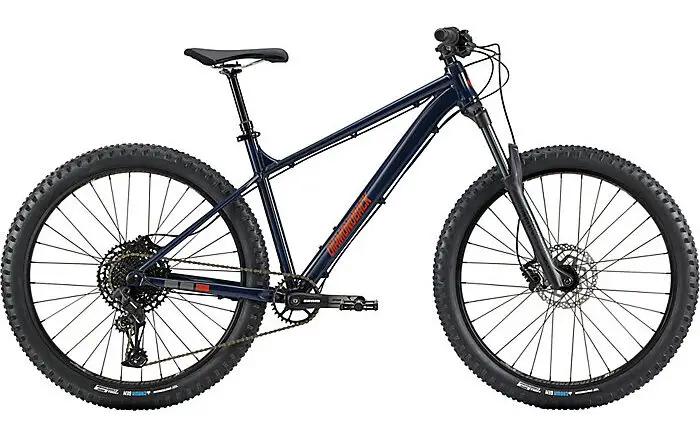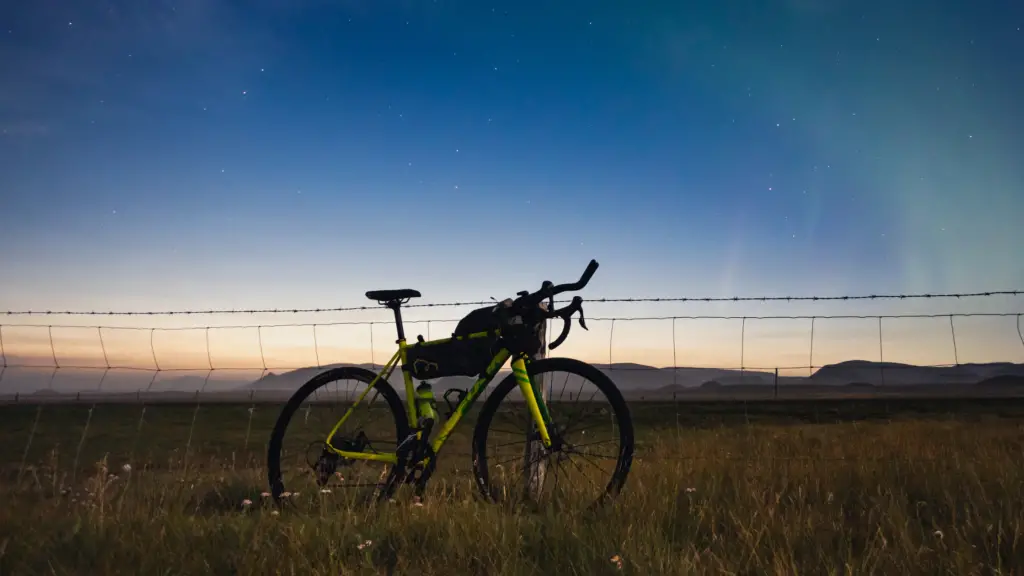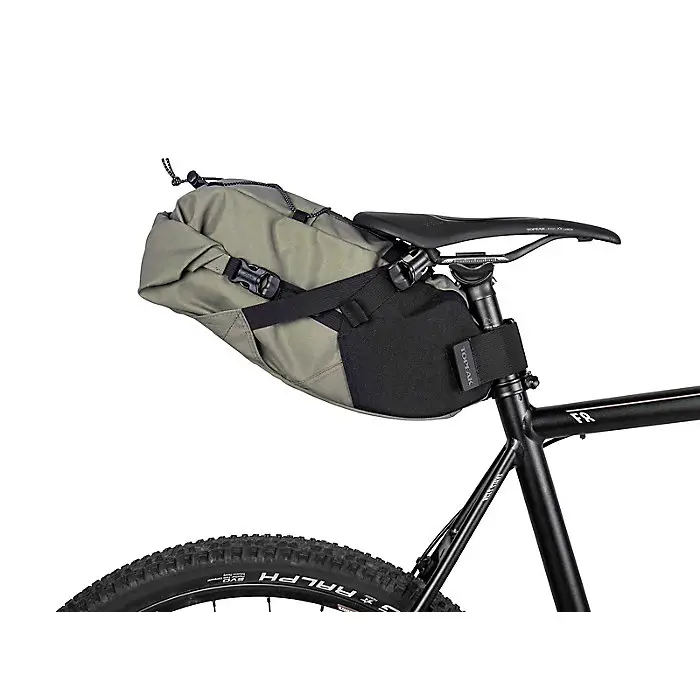Bikepacking is an exciting way to combine the thrills of cycling and the serenity of camping, allowing you to explore the great outdoors in a truly unique way.
As a hobby, bikepacking offers numerous benefits, including improved fitness, a strong connection with nature, and the opportunity to explore off-the-beaten-path destinations.
In this comprehensive guide, we’ll delve into the basics of bikepacking, compare it to bike touring, offer beginner tips, and suggest gear recommendations to get you started on your adventure.

Understanding the Difference Between Bikepacking and Bike Touring
Before diving into bikepacking, it’s important to understand the key distinctions between bikepacking and bike touring.
Bike types: Bike touring typically involves road or touring bikes designed for long distances and smooth pavement, whereas bikepacking utilizes more versatile bikes, such as mountain bikes, gravel bikes, or fat bikes, that can handle a variety of terrains.
Luggage systems: Bike touring often employs panniers and racks for carrying gear, while bikepacking utilizes soft, lightweight bags that attach directly to the frame, handlebars, and seat post.
Route planning and terrain: Bike touring routes usually follow paved roads and well-maintained trails. Bikepacking, on the other hand, often involves a mix of off-road terrain, singletrack trails, and gravel or dirt roads.
While both styles of adventure cycling have their pros and cons, bikepacking offers a more immersive experience in nature and greater flexibility in route selection.

Choosing the Right Bike for Bikepacking
Selecting the appropriate bike for your bikepacking adventure is crucial. Here are some factors to consider when making your choice:
Bike Type: A versatile bike, such as a mountain bike, gravel bike, or fattire bike, will provide the most flexibility in terrain options.
These bikes typically have wider tire clearance and more rugged frames, making them well-suited for off-road adventures.
Frame Material: Bike frames are typically made from steel, aluminum, carbon fiber, or titanium. Steel and aluminum frames tend to be more affordable and durable, while carbon fiber and titanium frames offer lighter weight and a smoother ride.
Gearing: A bike with a wide range of gears is essential for tackling varied terrain. Consider a bike with a 1x drivetrain, which simplifies shifting and reduces the likelihood of mechanical issues.
Tire Clearance: Wider tires provide better traction and stability on rough surfaces. Choose a bike that can accommodate at least 2.0-inch-wide tires for added versatility.

Essential Bikepacking Gear
Equipping yourself with the right gear will ensure a successful and enjoyable bikepacking adventure.
Here’s a rundown of the essential items you’ll need:
Bikepacking bags: These soft, lightweight bags attach directly to your bike without the need for racks.
Frame bag: A frame bag fits within the triangle of your bike frame and is perfect for storing heavier items.
Handlebar bag: A handlebar bag attaches to the front of your bike and is ideal for bulky, lightweight items like a sleeping bag or tent.
Seat bag: A seat bag hangs off the back of your saddle and is suitable for clothing and other compact items.
Accessory bags: Additional bags, such as top tube bags or fork bags, can be used to store smaller items like snacks, tools, and electronics.
Navigation Tools
GPS device or smartphone apps: A reliable GPS device or smartphone app is essential for navigating your route. Popular apps like Komoot and Gaia GPS provide detailed maps and route planning features designed for outdoor enthusiasts.
Paper maps: Always carry paper maps as a backup in case of electronic failure or limited battery life. Topographic maps can help you understand the terrain, while road maps can assist with route planning and finding resupply points.
Camping Equipment

Tent or bivy: Choose a lightweight, compact tent or bivy sack suitable for the expected weather conditions. Consider the trade-offs between weight, durability, and comfort when making your selection.
Sleeping bag: Opt for a sleeping bag rated for the lowest temperatures you may encounter. Synthetic or down insulation both have their pros and cons, so consider your personal preferences and the environmental conditions when choosing.
Sleeping pad: A comfortable sleeping pad is essential for a good night’s sleep. Look for lightweight, compact options like inflatable pads or closed-cell foam pads. d.
Cooking system: A lightweight, efficient cooking system is important for preparing meals on the trail. Consider options like a backpacking stove, fuel, a pot, and utensils that are easy to pack and clean.
Repair and Maintenance Tools

Multi-tool: A quality multi-tool with essential bike-specific functions like Allen wrenches, a chain tool, and spoke wrenches will help you tackle common repairs on the trail.
Tire levers: These handy tools make it easier to remove and install tires when fixing flats.
Patch kit and spare tubes: Carry at least one spare tube and a patch kit to repair punctures. dPump or CO2 inflator: A mini pump or CO2 inflator is necessary for reinflating tires after repairs.
Clothing and Personal Items

Weather-appropriate clothing: Dress in layers, including moisture-wicking base layers, insulating mid-layers, and waterproof outer layers to adapt to changing weather conditions.
Hygiene and first-aid kit: Pack a small hygiene kit with essentials like toilet paper, toothbrush, and toothpaste, as well as a basic first-aid kit with band-aids, pain relievers, and any personal medications.
Water filtration system: A portable water filter or purifier is crucial for ensuring access to safe drinking water during your trip.
Tips for First-Time Bikepackers

Start with shorter, local trips! Before embarking on a multi-day adventure, test your gear and gain experience with shorter overnight trips close to home. Figure out how your gear works, learn problem solving skills and trouble shooting before heading out into more remote areas.
Plan your route carefully: Research the terrain, elevation changes, and technical challenges of your chosen route to ensure it matches your skill level. Plan your route around reliable water sources and food resupply points to avoid running out of essential supplies.
Check out this awesome map from Bikepacking.com to plan out a fun route anywhere in the world!
Pace yourself and know your limits: Bikepacking can be physically demanding. Start with a manageable daily mileage and gradually increase as you gain experience and confidence.
Pack light and efficient: Aim to minimize weight and pack only the essentials. Carefully consider each item’s necessity and choose lightweight, multi-functional gear whenever possible.
Learn basic bike repair skills: Familiarize yourself with basic bike maintenance and repair techniques, such as fixing a flat tire, adjusting brakes and derailleurs, and mending a broken chain. Many REI locations and local bike shops offer bike repair classes.
Practice Leave No Trace principles: Minimize your impact on the environment by following Leave No Trace guidelines, including properly disposing of waste, respecting wildlife, and leaving natural and cultural features undisturbed.
Finding Bikepacking Routes and Resources

Online route databases and forums: Websites like Bikepacking.com and Adventure Cycling Association offer extensive route databases and forums where experienced bikepackers share advice and trip reports.
Local bike shops and clubs: Connect with local bike shops and clubs for route suggestions, group rides, and skill-building workshops.
National and state park resources: Many national and state parks provide information on bikepacking routes, camping options, and trail conditions.
Conclusion

With this comprehensive guide, you now have the knowledge and resources to embark on your first bikepacking adventure. Remember to choose the right bike and gear, plan your route carefully, and start with shorter trips to build experience and confidence.
As you gain proficiency, you’ll be able to tackle more challenging routes and create unforgettable memories in the great outdoors.
Bikepacking is an immensely rewarding hobby that will challenge your body, mind, and spirit. So, gather your gear, plan your route, and get ready to embark on the adventure of a lifetime!
Looking for more great outdoor hobbies? Check out our Huge List of Outdoor Hobbies for more great ideas.
References
[1] Bikepacking.com. (n.d.). Bikepacking vs. Bike Touring: What’s the Difference? Retrieved from https://bikepacking.com/guide/bikepacking-vs-bike-touring/




